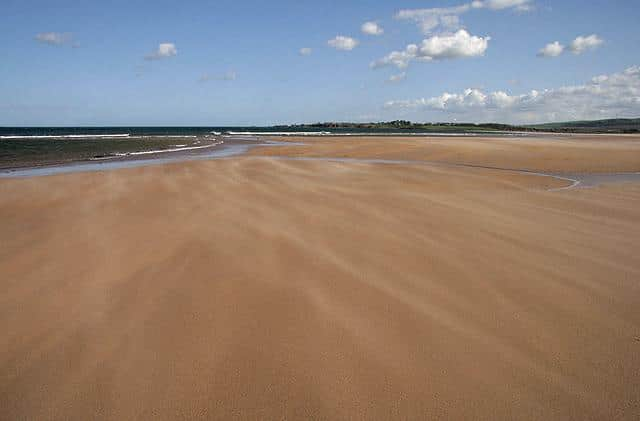Shaun Milne: leadership in Scotland needed over climate crisis


It is as about as close to nature as you might want to be, and the town has grown up around it. From the harbour with its boats to the multi-coloured wooden shacks people call home, or purpose-built Coast to Coast Surf School.
That is why I was there, surfing for my birthday on Saturday with son Joshua while camping for a couple of nights. Malcolm our instructor taught not just about the waves and rip tides, but the habitat itself.
Advertisement
Hide AdAdvertisement
Hide AdAt 11-years-old Joshua handled safe jellyfish, learned the hard way about how a Weaver can sting, and mastered how to pop up effortlessly on board and ride a set of waves before tumbling into sea in a volley of laughter. As school holidays go, it’s the kind of life education East Lothian can be proud of.
The sun was beating down on my Marine Conservation Society t-shirt specially picked out for the occasion as we finished up with a vegan barbecue. I stared out again at the sea, then the homes around us, and lamented to myself about how one day they might disappear.
According to the Royal Society it is just such areas that will be affected by storm surges if nothing is done to reverse climate change. Climate Central predicts sea rises of 5ft by 2080 or before. That would inundate vast tracks of land along the east coast, Musselburgh in part may be lost.
East Lothian Council to its credit is taking such a threat seriously, last year approving a climate change strategy limited to 2025 knowing that it will need update in bursts.
It is taking a two-pronged approach looking at both Climate Change Mitigation and Climate Change Adaptation. Officials have been charged with helping it become Net Carbon Zero by 2045, but their efforts are extending far beyond that.
Among the initiatives are actions on active and sustainable travel, energy efficient buildings, a route to zero waste, developing a low carbon sustainable economy and more including exciting plans to develop an East Lothian Climate Forest.
It is an example that others from the local City Region deal are paying close attention to, and so they should. East Lothian has already reduced its emission by 66% since 2007.
Nearby Edinburgh has already pledged to plant a million trees by 2030, West Lothian Council has declared a climate emergency and is implementing its own plans. Midlothian with its parks and open spaces has a vision to extend nature’s reach.
Advertisement
Hide AdAdvertisement
Hide AdAll around from Glasgow as it plans ahead for COP26 to the North East as Aberdeen and others try to transition in baby steps from oil and gas and to a renewable future being led for the most part by Highland and Moray, councils are upping their game.
And it is clear to see why. While crashing through the waves and meandering along sands, we were utterly oblivious to the carnage being wrought by thunderstorms just 30 miles away in my Edinburgh hometown as roads, homes and businesses flooded.
It is these pockets of increasingly freaky weather that perhaps hits home to people the most. Trains derail, roads close, hospitals get overwhelmed. Tangible signs of what is to come. Look to Canada, to Europe people. We can’t vote to leave climate change.
The lead here must come from the Scottish Government. Not just on the climate crisis but for biodiversity, climate education and a proper mechanism of climate funding for councils and other organisations.
There are signs of progress. Mairi McAllan’s appointment as Minister for Environment, Biodiversity and Land Reform promises much, Mairi Gougeon in Rural Affairs, Michael Matheson in Net Zero, Energy and Transport, in tandem with Finance and Economy Secretary Kate Forbes and Humza Yousaf in Health suggests a joined-up approach.
But the exciting prospect here too is the potential for working with the Scottish Greens in some kind of New Zealand style alliance. While Unionists will be appalled at such a pro-indy pact, the threat of climate has to transcend division. We’re all in it.
Which brings me back to perhaps Dunbar’s most famous son, nature conservation pioneer John Muir who told us: “When we try to pick out anything by itself, we find it hitched to everything else in the universe.”
As we emerge from the storm of pandemic into one with far greater consequences, perhaps ‘working together’ is never more important.
Shaun Milne is host of the Sustainable Scotland podcast and CEO of Skog Media Associates